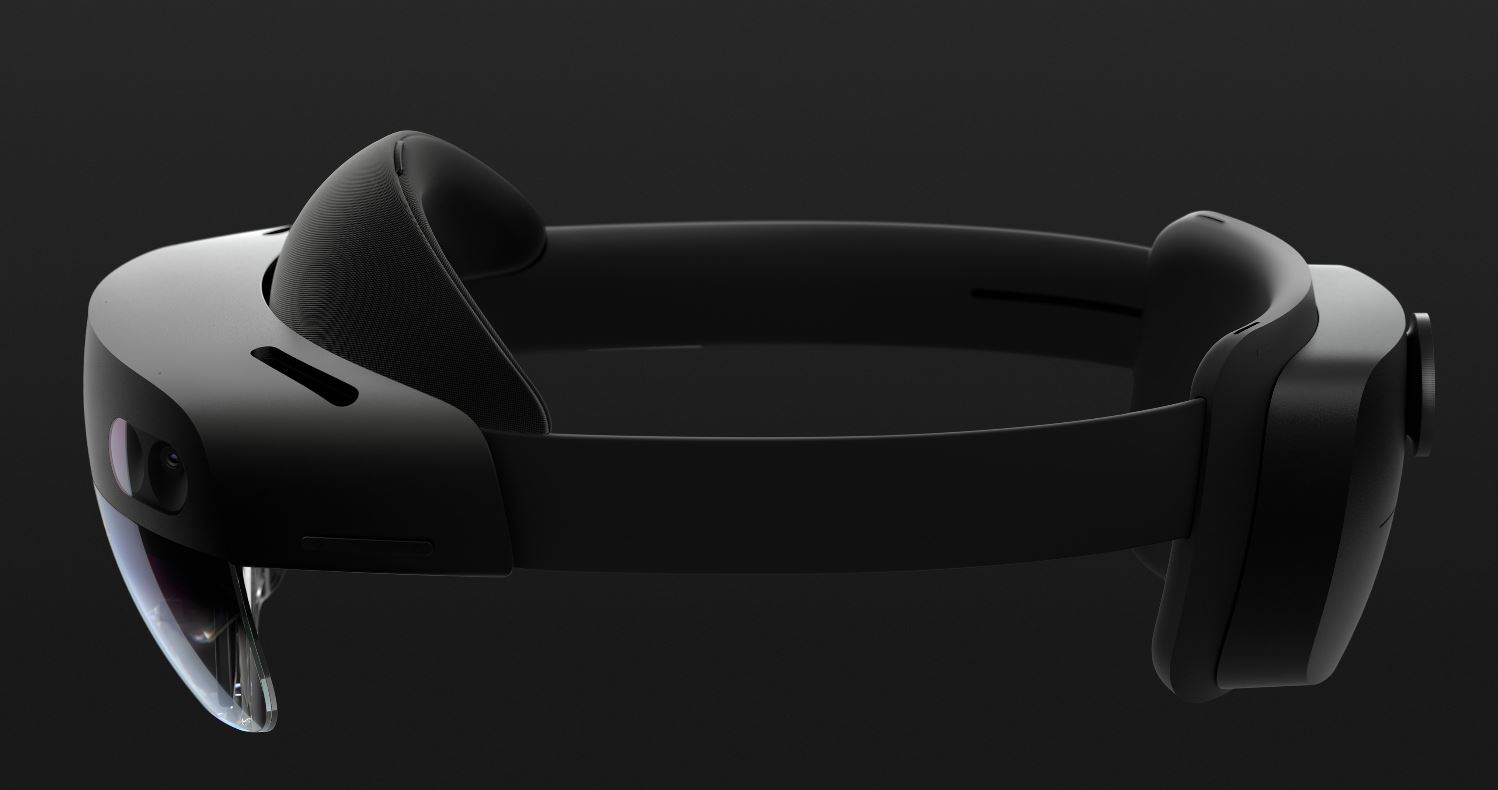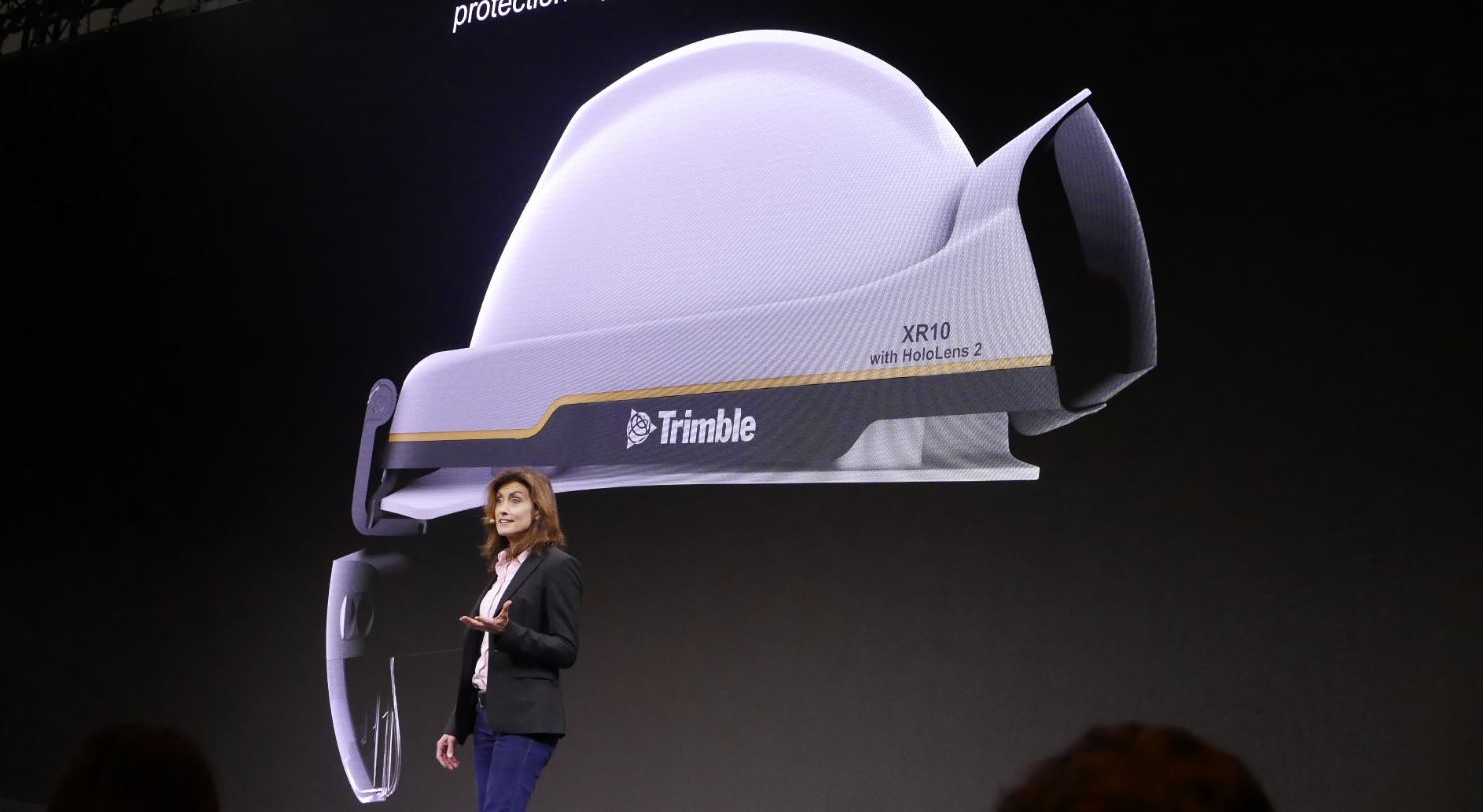Microsoft Announces $3,500 HoloLens 2
Today Microsoft revealed the HoloLens 2 for the first time. The upcoming device offers vast improvements over the first-gen HoloLens headset, such as intuitive controls and better comfort. Microsoft also brought the price down a smidge, but at $3,500, this one’s still meant for big businesses.
Microsoft’s HoloLens 2 is a completely redesigned headset, with an all-new exterior design, high-quality material construction, and newly-designed internal components. Microsoft said it built the new headset with three things in mind: More immersion, better comfort, and more value out of the box.
Better Immersion
To improve immersion, the HoloLens 2 displays offer double the field of view (FOV) as the original model, while maintaining the same level of visual clarity as the original device. Microsoft’s original benchmark for image clarity was 47-pixels per degree of visible area, and the company achieved that same benchmark in the new headset by installing two 2K MEMS displays—one for each eye.
Microsoft also went back to the drawing board and re-imagined the way to interact with the mixed reality world. The original HoloLens relied on gesture controls, which weren’t as intuitive as you would imagine. The new method of interaction is more like interacting with the real world, meaning you can reach out and touch holographic objects as if they were real.
Want to move a window? Grab onto it and drag it around. Is that object to small? Grab the corners and stretch it. Is there a button to press? Reach out and push it. The new HoloLens also includes a new feature called Follow, which enables apps to track and follow your movement so that you can bring heavily-used applications with you all the time.
While we have not yet tried the new interaction system, watching the presentation demonstrates that it would be far superior to the old method. Microsoft said the HoloLens 2 is capable of these advanced interactions because it includes a brand-new Kinect sensor, which is capable of fine spatial tracking of your whole environment, the objects within it, and yourself, right down to your individual fingers.
Superior Comfort
For the comfort side of things, Microsoft redesigned the exterior of the headset. The new device is much more compact than the first-generation HoloLens, and it’s made of lighter materials. The entire front visor of the headset is made of carbon fiber to reduce the weight and aid with weight distribution. Carbon fiber is also an incredibly tough material, which should help protect it from damage in industrial settings.
Get Tom's Hardware's best news and in-depth reviews, straight to your inbox.
The original headset had a dual headband system that enabled you to adjust the headset to line up with your eyes, which worked well enough, but it was a cumbersome system that didn’t accommodate glasses. The new headset features a balanced crown headband with an adjustment dial on the back like many of the Windows Mixed Reality VR headsets. Microsoft also gave the HoloLens 2 a flip visor, to bring the lenses out of your view without removing the headset. Not that removing the headset would be difficult. Microsoft said it’s as easy to put on as a regular hat.
Out-of-the-Box Value
The original HoloLens was an expensive device that didn’t include any bundled software. Microsoft said that, on average, it would take companies who invested in a HoloLens three months before they could use it in meaningful ways. To fix that issue, Microsoft worked with partners to ensure that HoloLens 2 would have a robust software ecosystem at launch.
Microsoft said that Microsoft Dynamics 365 would be updated for the HoloLens 2, with Remote Assist and Layout ready to go at launch. The company is also planning to release a new app called Guides, which would enable experienced workers to create instruction guides for recruits.
The HoloLens 2 will also integrate with a new cloud service called HoloLens Azure, which will enable shared mixed reality experiences across a variety of devices. HoloLens Azure Spatial Anchors allow AR Kit, AR Core, and HoloLens devices to see the same virtual objects in real-time to facilitate collaborative work. HoloLens Azure cloud services also include Remote Rendering, which allows you to stream high-polygon content of infinite detail on HoloLens devices.
HoloLens Customization Program
Microsoft also revealed the HoloLens Customization Program, which allows partner companies to modify the HoloLens headset to meet specifications for industrial use cases. Trimble is the first company to take advantage of the customization program, and it announced the Trimble XR10, which is a HoloLens 2 integrated into a hard hat for first-line construction workers. Trimble didn’t say how much the XR10 would cost, but the device will ship when Microsoft ships the HoloLens 2.
Pre-orders Available Now
Microsoft did not reveal the shipping date for the HoloLens 2, but the company is ready to take your money anyway. The HoloLens 2 is available now for pre-order at HoloLens.com. You can pay $3,500 to buy the device outright, or you can finance it for as little as $150 per month.
Want to comment on this story? Let us know what you think in the Tom's Hardware Forums.
Kevin Carbotte is a contributing writer for Tom's Hardware who primarily covers VR and AR hardware. He has been writing for us for more than four years.



